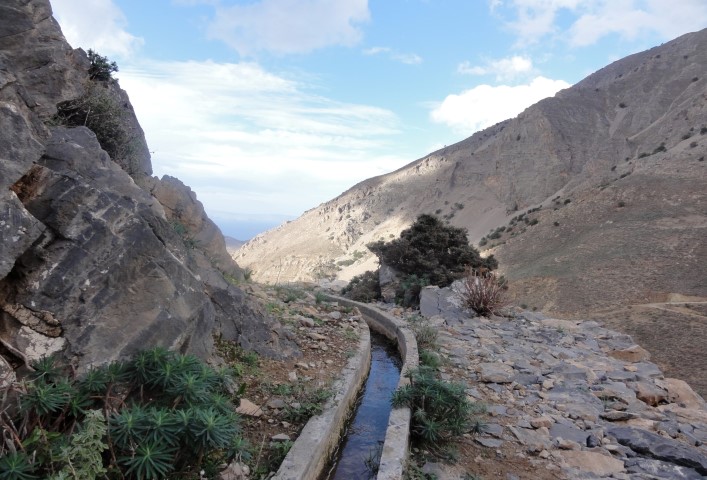
Mesona Gorge
The gorge of Mesona is located north of Ierapetra, in between Sitia and Agios Nikolaos. You will find it on the east side of Kavoussi village; it is the continuation of the gorge Havga to the southeast in the direction of Mount Thripti.
It is passable for hiking from the ancient path that starts from Kavoussi village through Havgas and continues parallel to Mesonas. Its total length is 2 km and the altitude difference between entrance and exit is 450 meters.
One of the smallest canyons, it offers a challenge to amateur hikers due to its narrow size and crossing it requires special equipment and technical training. The water flow is minimal even during the winter, but weather conditions can make the path treacherous so it is best not attempted after heavy rainfall. Overall, the water flow tends to stop about mid-way through the gorge. On average, it takes about 3 hours for experienced canyoneers to descend the 9 rappels.
The gorge of Havga nearby is equally small, and relatively unknown, often confused with the Havgas Gorge in Lassithi or the one in Plaka east of Agios Nikolaos. This route will take you through the stunning range of Thripti, that is part of the E4 European long-distance path with a plethora of hiking trails on offer. The gorge of Ha, one of the most challenging in the whole island, is also located nearby and has a depth of more than 1,000 m. It is not easily accessible and is not recommended for amateur hikers but is a very important habitat. It is 1,6 kilometre long in total and the elevation difference between the entrance and the outlet is approximately 230 metres. The path offers breathtaking views of the surrounding mountain hills, as well as the bay of Mirabello to the north.
Close to the entrance of Havgas you will find the Minoan settlement of Azorias which prospered during the Archaic Period and was first excavated in 1900 by Harriet Boyd. This is also where you will find the oldest olive oil tree in Crete, that has been standing there for more than 3225 years.